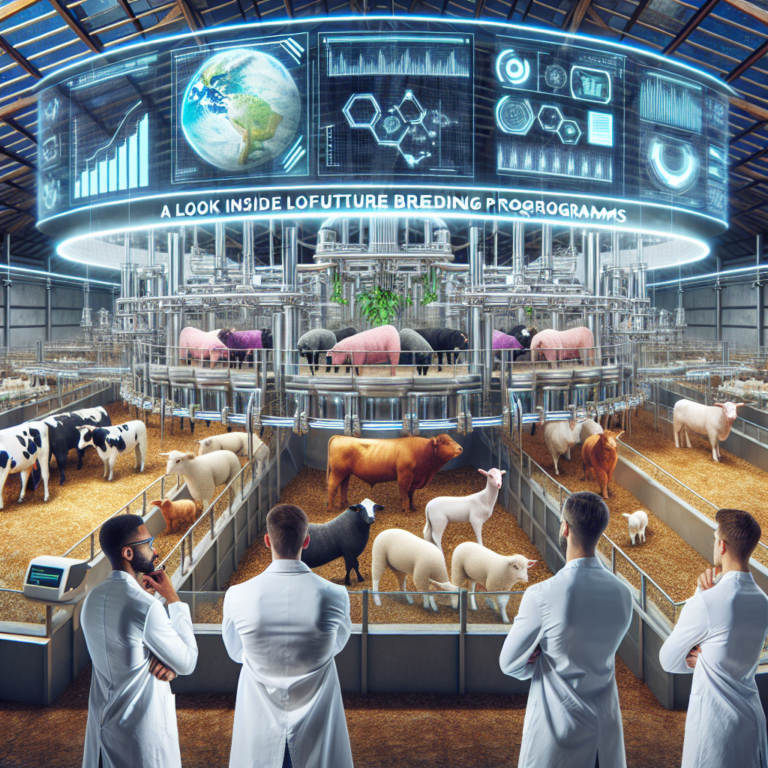As the global population continues to grow, so does the demand for food, including meat and dairy products. In order to meet this increasing demand, livestock breeding programs are constantly evolving and incorporating cutting-edge technologies to improve the efficiency, health, and quality of livestock.
One of the key challenges facing the livestock industry is the need to produce more food with limited resources, such as land and water. To address this issue, breeders are focusing on developing animals that can thrive in a variety of environments and are more efficient at converting feed into meat and milk. This is where genetic selection and genomic technologies come into play.
Genomic selection allows breeders to identify animals with desirable traits at a very young age, even before they reach reproductive age. By analyzing the DNA of animals, breeders can predict their potential for traits such as growth rate, feed efficiency, disease resistance, and even meat or milk quality. This allows breeders to more effectively select and breed animals with the highest genetic potential, ultimately leading to more productive and profitable herds.
In addition to genomic technologies, breeders are also exploring other cutting-edge techniques such as gene editing. This technology allows breeders to directly target and modify specific genes in livestock, potentially eliminating undesirable traits or introducing desirable ones. For example, researchers are working on developing pigs that are resistant to certain diseases or have improved meat quality through gene editing.
Another area of innovation in livestock breeding is the use of artificial intelligence and big data. By collecting and analyzing massive amounts of data on individual animals, such as their behavior, health, and performance, breeders can gain valuable insights that can inform breeding decisions. This data-driven approach allows breeders to make more precise and informed decisions, leading to faster and more effective genetic improvements in livestock.
Overall, the future of livestock breeding looks promising, with advancements in genetic technologies, artificial intelligence, and data analytics paving the way for more efficient, healthy, and sustainable livestock production. By incorporating cutting-edge breeding programs, breeders can continue to meet the growing demand for food while also ensuring the welfare and productivity of livestock. As these technologies continue to advance, we can expect to see even more rapid progress in the development of livestock with improved traits and capabilities.










